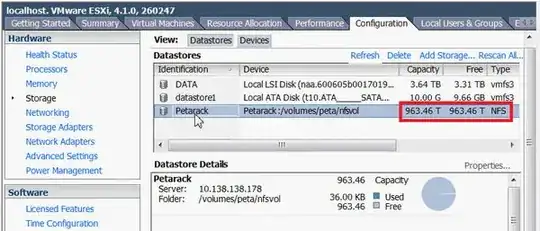I'm a VCP 4 so I'm aware of the configuration maximums for LUNs/RDMs/VMDKs in vSphere 4, but say I want to create a VM that has a logical drive bigger than 2TBs. The only ways I can think of doing this are:
Creating the VM with multiple VMDKs each less than 2TB on different LUNs and spanning or software RAIDing them in the guest operating system.
Creating a VMFS extent across multiple LUNs and creating multiple VMDKs and spanning or software RAIDing them in the guest operating system (just a slight variation of #1).
Use multiple 2TB or smaller RDMs and spanning or software RAIDing them in the guest operating system.
Mount an iSCSI LUN larger than 2TB from the guest operating system.
All of these methods rely on spanning/software RAIDing from the guest operating system. Is this pretty much it or are there other possibilities?
Update TomTom pointed out a 4th option.
Update 2 Tom's hardware has an interesting article about a petabyte sized storage device. They have a screenshot of it mounted via NFS in vSphere 4.1. As to JakeRobinson's suggestion with NFS, the sky is the limit with these types of datastores!
